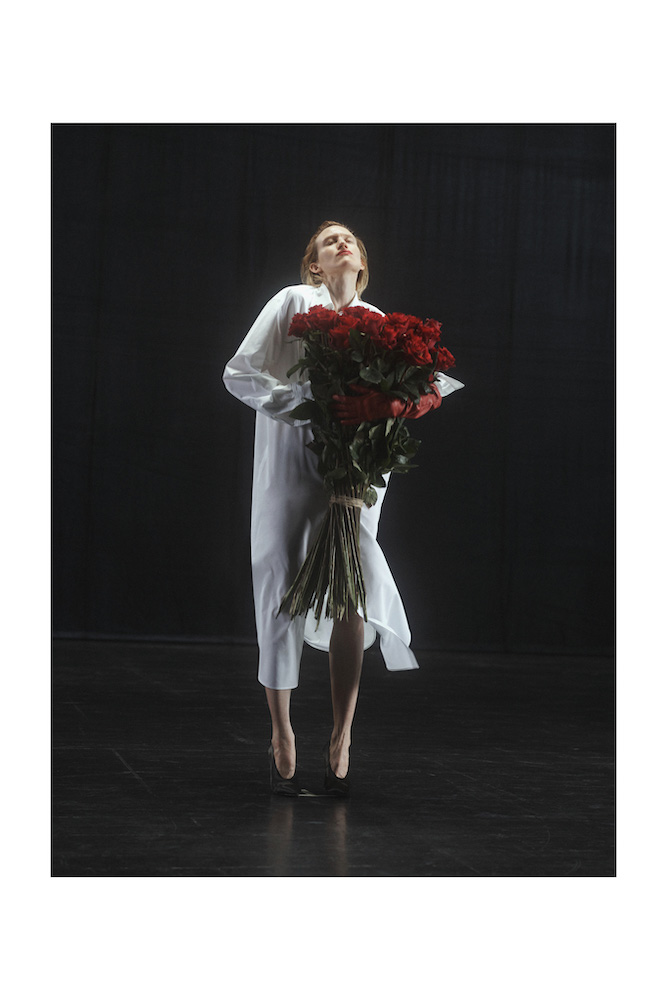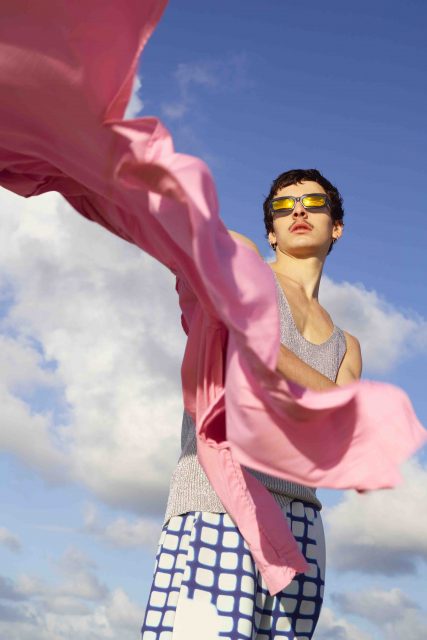There’s something cathartic about watching pent-up rage, frustration, confusion, longing and separation being danced out on a darkened Antwerp stage in Dries Van Noten’s film for fall 2021. Naming the un-nameable feelings of our times, it plays out in territory close to home, evoking both the Belgian fashion culture of the ’90s which Van Noten belongs to, and the visceral physical intimacy of how we relate to clothes. “I think we’ve passed the stage of pretending,” he said. “We’ve all gone through something really not nice together. There’s kind of a rawness and directness also—it’s real movements, it’s real emotions.”
Twelve months and a pandemic have taken Van Noten a very long way from the mentality of wanting to show on a runway. His alternative, under strict COVID conditions, was a major production: a gathering of 47 dancers and models on the stage of the deSingel theater in Antwerp, filmed by the director and photographer Casper Sejersen. Somehow suspended in a liminal space redolent of vaudevillian glamour and an underground Belgian alternative art club, it’s an adult psycho-sexual drama clothed in Van Noten’s glittery marabou-trimmed dresses, dark tailoring and print-splashed volumes.
“It’s rare that I’ve seen so much emotional kind of things which have cropped up in the body,” Van Noten remembers. “Nobody was just saying like, ‘Oh, let’s make a pretty move.’ I think one way or another, there was something on stage there [that happened.] You felt that people wanted to say something with their body, even the models, who after five minutes were dancing even better than some dancers. I think Casper really managed to put that into the video—you really feel that kind of intensity that everybody felt and shared in that moment.”
In this strangest of all seasons, several fashion labels have been linking up with people in the performing arts to put the lights on in darkened theaters—Erdem at the Bridge Theatre in London, Valentino at the Piccolo Teatro in Milan, too. For Van Noten, the show-as-dance in his home city also circled back to the relationship he struck up with De Keersmaeker, who emerged as a force in contemporary dance in Brussels at the same time as Van Noten and his fellow designers of the Antwerp Six were on the rise in the late ’90s. Flashes of vermilion and silver, and the slip-dresses in the fall collection, distinctly recall his costumes for De Keersmaeker’s 1998 Rosas company ballet Drumming; the score is Massive Attack’s “Angel” from the same year. That, of course, was a ground-breaking time for the edgy-cool aesthetic that swept from Belgium to challenge the polish of Parisian establishment fashion. Something about it chimes as relevant all over again. “A little bit kind of the wrongness,” as Van Noten put it, “which is also feeling right for this moment.”
What also feels right to him is the prospect of never returning to the old rituals and limitations of sending out collections to walk up and down a runway. In the digital age, the opportunity to show clothes in movement, in different situations, on different kinds of people, and getting at social situations way beyond the narrow conventions of shows has turned out to be far more exciting, he says. “Do we really want to go back at a certain moment to 50 girls in a row who are 16-, 18-years-old, with a perfect size? Anyway, for June and September I don’t want to even think about shows. I don’t know if I’m going to feel the need to do a fashion show. If we are going to do them, it’s not going to be in the same way as before. I think this time is over, and nobody has the need to see a circus like that again. I think there’s now a realness and intensity, with the videos and pictures, and the way that everyone is finding their way to express themselves. And I feel quite well with what we’re doing now.”
Read Next
Dries Van Noten Believes in “Beauty That Evokes Energy” for Spring/Summer 2021
Editor
Sarah MowerCredit
Photo Courtesy of Gorunway

